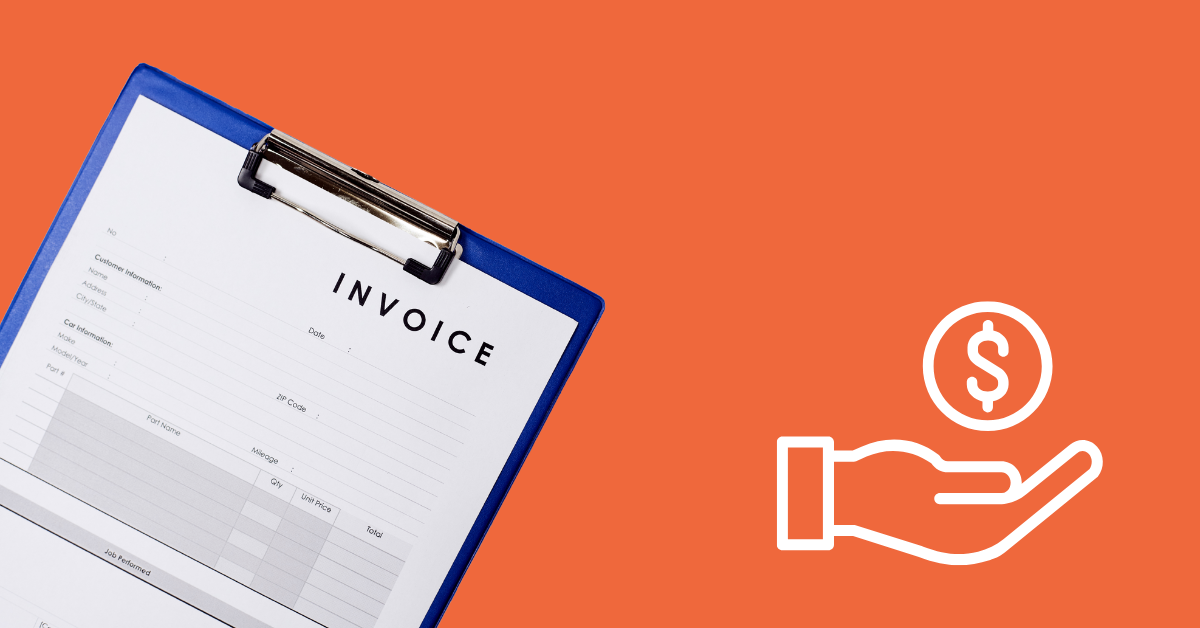A statement of account is a billing document sent to customers to provide an itemized list of the services or products they have received, as well as the associated charges.
This document can also be referred to as a statement of account email, statement of account letter, account overview, account summary, or customer statement.
In this article, we will outline what goes into a statement of account letter or document, when you should send it, and how to format it correctly, as well as a helpful template for you to use. We will also include a statement of account sample that you can use whenever you want in your business for financial transactions.
Sending out a statement of account email to your customers is a great way to improve communications and keep them updated on transactions and what they owe.
What is a statement of account?
A statement of account, also referred to as a customer statement, is similar to a bank statement, except that the document summarises the goods or services a customer has received and their associated charges.
(A regular bank statement lists spending in a bank account. An account statement shows a customer's spending with a specific firm).
An account statement usually includes the customer's name and account number, a list of transactions with dates, a reference to the original invoices or purchase orders, and the current balance. When the document specifies only overdue amounts, it's often called an ageing report.
It is important to note that a statement of account is not an invoice. An invoice is a request for payment. A statement of account is a summary of what the customer owes. Despite the similarities between the two documents, they serve different purposes.
A statement of accounts shows a summary of all transactions for a given period and can include multiple transactions or invoices. As such, accounts statements contain the following:
- A summary of all transactions
- The statement period (the specific period in which it applies, such as the month or quarter)
- A reference number for identifying the statement
- The customer's name and account number
- Your business name
- A list of transactions with dates
- A reference to the original invoices or purchase orders
- The new balance and total balance in the current period
- Past due amount, if any
- The date the statement was prepared
- Credit notes usually represented as a negative value
By contrast, an invoice simply summarises all the transaction information for one particular sale transaction affecting the customer.: for example, one service that is purchased, or one order of goods from a business.
Consequently, an invoice contains the following:-
- A request for payment
- The name, address, and contact information of the person or company billing
- A description of the goods or services provided
- The date(s) services were performed
- The amount due for each line item
- Terms of payment (due date, discount percentage for early payment)
- Any other relevant information about the transaction including late payment fees
See our guidance on creating the perfect invoice and what to include. While an invoice requests payment for goods or services, an account statement simply lists what the customer owes.
Sending out a statement of account email to your customers is a great way to improve communications and keep them updated on transactions and what they owe.
An amended invoice or credit note is something you send to clients to change the particular amount they need to pay or owed to them. (Sometimes this can occur if the original invoiced amount was wrong or the customer sends too much money).
Sample email to send account statements
Creating a statement of account letter is simple and only requires a few steps. To help out, we've put together a statement of account email template for you to use. This sample email to send account statements to your customer can be easily customized to fit your needs, similar to a sales invoice or credit note. (Usually, you don't need to send a statement of accounts to a customer with a zero balance unless they specifically request it).
To: customer@email.com
Subject: Your account statement from [Your Company]
Hello [Customer Name],
Thank you for being a valued customer of [Your Company]. We appreciate your business and want to ensure that you are always up-to-date on what you owe.
Please find attached your latest statement of account for the period [Date] to [Date]. If you have any questions, please do not hesitate to contact us.
Thank you for your time, and have a great day!
Sincerely, [Your Company] [Your Name]
Why is a statement of account important?
Like a bank statement, a statement of account is an important tool for keeping track of what a customer owes to your business. By sending regular statements, you can help prevent customers from falling behind on payments and keep your business's cash flow healthy.
From a customer's point of view, a statement of account can be good for keeping track of what they owe, especially if they have multiple invoices from different businesses.
Sending out regular statements can also help build trust with customers and show that you're a professional and reliable business.
When to send an account statement or account summary to customers?
How often you send a statement of account to clients will depend on your business and customer preferences. Some businesses choose to send statements monthly using account templates, while others send them quarterly or annually. (Again, this approach is similar to a bank statement or sales invoice with customer cut-off dates).
You can also tailor the frequency of statements to each customer, such as sending monthly statements to clients who have a history of late payments and quarterly statements to customers who always pay on time.
When it comes time to send out your business statement of accounts, you should keep a few things in mind. First, make sure that all the information included is accurate and up-to-date. Including outdated or incorrect information, such as the opening balance, could frustrate clients and damage your relationship with them.
Second, be sure to include clear instructions on how customers can make a payment. If you're not clear about how or when customers should pay, they may become confused and end up making a late payment - or no payment at all. Include your business name and various payment details.
Finally, try to make your statement of account as user-friendly as possible by leveraging account templates. Include a summary of all the transactions and customers' account activity like a bank statement, highlight any outstanding balances, and make it easy for clients to find the information they need.
By following these tips, you can ensure that your statement of account is professional, informative, and helpful - and that your customers will appreciate receiving it.
What is a 'time bucket'?
In the context of statements of account, a time bucket is a grouped selection of invoices that show how overdue a particular invoice amount is.
Time buckets are an important part of a statement of account because they help businesses keep track of which invoices are the most overdue and prioritize accordingly.
Including time buckets in your statement of account can be helpful for clients, too - it makes it easy for them to see how much they owe and when each invoice is due.
There are a few different ways that you can group your invoices into time buckets.
One common method is to group invoices by the number of days they're overdue: 0-30 days, 31-60 days, 61-90 days, and so on.
Another option is to group invoices by the date on which they were issued: invoices from the previous period, the current month, invoices from the previous month, and so on.
Finally, you could also group invoices by the closing date and the due date: all invoices due in the next week, all invoices due in the next two weeks, and so on.
Whichever method you choose, time buckets can be a helpful way to keep track of your accounts receivable - and help your clients stay on top of their payments.
What goes into a statement of account letter?
Statement of account templates usually adhere to the following format:
- The name, address, and contact information of the company or individual who issued the invoice
- The date on which the invoice was issued
- A list of all items included in the invoice, along with their prices
- The total amount due
- The date by which payment is due
- Any late fees or interest that will be charged if payment is not received by the due date
- Contact information for someone at the company who can answer questions about the invoice.
If you're sending a statement of account to a customer who has already paid their bill, you can include a "Thank you for your payment" message above the signature line.
It's important to be polite but firm in a statement of account letter. You want to maintain a good relationship with your customer, but you also need to remind them that they owe you money.
Be sure to include all the relevant information so the customer can make their payment as quickly as possible.
It's worth reiterating that a statement of account is not the same as an invoice number or credit note, despite the obvious similarities.
An invoice is a request for payment that includes the invoice amounts and all the necessary information about the product or service being billed.
A statement of account, on the other hand, is a summary of all transactions for a given period.
Always use the correct account templates and include important details, such as ongoing transactions, the name of the account holder, the customer's details, any outstanding payments, the interest percentage, unpaid invoices, opening balance, interest charges and so on. You don't have to follow a strict rule on layout, but following a sample format containing detailed information makes it more likely you will receive the total invoiced amount.
Save time by automating your account statements and letters
In the scramble to make the best use of a company's time and resources, sending regular and accurate statements of account can sometimes fall by the wayside.
But account statements are a fantastic tool for maintaining strong customer relationships, ensuring you are both on the same page about what is due, and ultimately helping you to reduce late payments and improve cash flow. You want to automate the process with statement of account templates, just like your bank automates bank statements and credit notes.
The good news is that there are software options available to automate the process of sending out statements, freeing up valuable time and energy for other tasks.
Chaser offers a range of features to help with this, including personalisable customer statements or statements of accounts, as well as personalisable, automated payment reminder emails for both invoices that can all be sent according to your chosen schedule.
You can set up a system that will save you time and keep your customers happy with just a few clicks.
Time is always money for any serious business owner, and using Chaser to automate your statement of account process is a sound investment.
Even better, with our fully customizable templates and the ability to include your business branding, you can add a level of personalization that will give your business that extra edge.
Streamline your accounts receivables process with Chaser
Sending account statements is a fantastic tool for maintaining strong customer relationships, ensuring you are both on the same page about what is due, and ultimately helping you to reduce late payments and improve cash flow.
The good news is that there are software options available like Chaser to automate the process of sending out statements, freeing up valuable time and energy for other tasks.
If you automate your accounts receivables process with Chaser, you'll also get:
Dedicated payment portals
Chaser includes personalized payment portals that make it easy for your customers to pay you.
Customers can log in and see a list of all the invoices they need to pay, and then pay them with just a few clicks.
You'll also get paid faster, as Chaser will automatically chase up any overdue invoices on your behalf according to the templates and schedules that you choose.
Time-saving and reporting
Chaser's reporting feature gives you instant insights into your business accounts receivables and cash flow.
You can see which clients are paying on time, which invoices are overdue, and how much money is coming in each month.
This valuable information can help you make informed decisions about your business finances and ensure you are reaching your accounts receivables KPIs.
Automated payment reminders
Late payment of invoices is a huge problem for small businesses. Many customers miss the cut-off date for the previous period's payments, causing them to show as outstanding on your accounting system.
Chaser's automated payment reminders will help you get paid on time, every time.
You can customize the polite payment reminder emails to include your company branding, and set them to go out automatically at a frequency of your choice.
No more wasting time and valuable staff members chasing payments. With Chaser, you can get on with growing your business.
Built-in credit checking
Credit checking is a vital part of managing your business finances.
Chaser's built-in credit checking tool will give you peace of mind when taking on new clients, and help you avoid doing business with companies that are at risk of defaulting on payments.
You can run a credit check on any company in seconds, and make informed decisions about who you do business with.
With Chaser, you can also regularly conduct credit checks on your existing clients to monitor their financial health and identify early warning signs of payment difficulties.
Multi-channel payment reminders
As well as scheduled email reminders, Chaser can now send SMS invoice payment reminders to your clients' mobile phones.
SMS reminders are an effective way to prompt customers who may have forgotten or misplaced their invoices, and can help you get paid faster.
Payment plans
You can also set up automatic payment plans on a monthly basis for customers who are struggling to pay their invoices in full and on time. This can let customers split larger invoices into smaller easy-to-manage installments. As a business owner, you can track payments received, unpaid sales invoices and more.
It can also help to cement good customer relationships by showing that you are willing to be flexible and help those customers who are struggling to pay their bills. Many business owners confirm this tactic improves their relationship with clients.
Keep your customers up to date and get paid faster with Chaser
Sending out a regular statement of account email is a great way to keep your customers informed of what they owe, and can help you get paid faster. With Chaser, you can automate your statement of account emails and save yourself and your team valuable time. By automating these processes, businesses have been able to save over 15 hours per week on previously automated processes.
Chaser is the leading debt-chasing and collections software, used by thousands of businesses around the world to streamline their debtor management.
Try Chaser free for 10 days and see how we can help you get paid faster.







